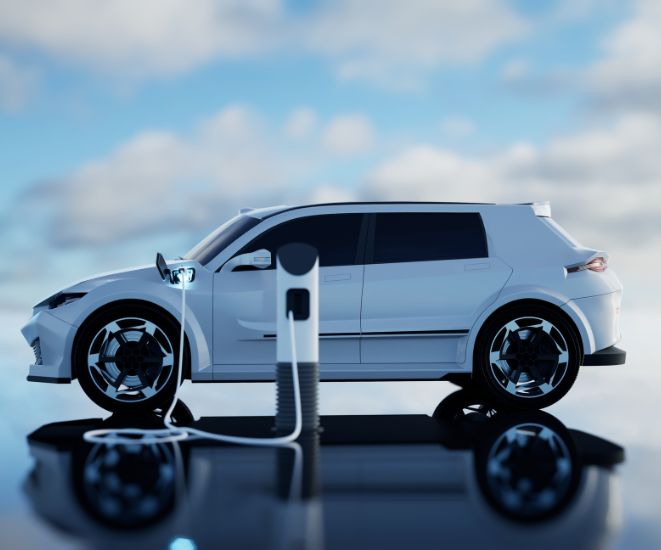Getting EV Deals for Buyers
If you’ve been browsing car lots recently, you might have noticed more electric vehicles (EVs) than usual sitting around unsold. That isn’t a coincidence. Across the country, EV inventories are swelling. For savvy buyers, this could mean good news: EV deals for buyers may soon be harder to resist. But what’s behind this overstock issue? And how can you take advantage?
What’s Causing EV Overstock?
1. Supply Outpacing Demand
Auto manufacturers, trying to keep up with surging long-term interest in electrification, ramped up EV production. But conversion isn’t always smooth. In many U.S. markets, consumer demand hasn’t kept pace. As Axios noted years ago: “unsold electric cars are piling up on dealer lots” when more models hit the market than can reasonably be sold.
2. The End (or Uncertainty) of Incentives
Until recently, U.S. buyers could rely on federal EV tax credits — up to $7,500 — to soften the sticker shock. But as of late 2025, many of those credits have expired or become harder to claim. That shift dampens buyer urgency. Some automakers are trying creative leases or discounts to “backfill” the lost incentive, but those workarounds only go so far.
3. Slower Adoption Curve Than Expected
Some segments of the car-buying public remain cautious about range, charging infrastructure and resale value. Harvard Business Review has pointed out that the EV market is hitting a more difficult phase in its adoption lifecycle — early enthusiasm is meeting real practical concerns.
Related Search Topics (Ads)
4. Competitive Pressure and Model oOverflow
More automakers are launching EVs. That variety can be good for consumers, but it also means each model has to fight harder for attention. Dealers can become flooded with overlapping models. A dealer’s guide to excess inventory noted that lots are “choked with excess EV inventory” and turn rates (how quickly cars sell) have slowed significantly.
5. Economics and Resale Risk
Some EVs lose value rapidly in the used market, which makes dealers and buyers more cautious. If dealers fear sharp depreciation, they become more reluctant to order or promote new inventory. EVs can also take longer to sell than gas cars. It's been reported that EVs sit for an average of 92 days when supply outpaced demand.
Case Study Models
Let’s look at how this overstock trend might affect some models you’ve heard of:
- Hyundai Ioniq. Hyundai introduced several Ioniq-branded EVs (Ioniq 5, Ioniq 6) with strong early buzz. But as discounts and incentives tighten, demand may flatten faster than supply can adjust.
- Ford Mustang Mach-E. Ford has pushed the Mach-E hard as a flagship EV. If buyer enthusiasm cools and dealers can’t move inventory, deeper discounts or incentives might become more common.
- Jeep Recon. As a newer name in Jeep’s EV lineup, the Recon faces the challenge of awareness and distinguishing itself. Early stock may sit longer until the brand solidifies its identity.
- Audi e-tron. As a luxury EV, the e-tron already competes in a narrower market. Excess inventory here can mean steeper markdowns for buyers who are patient and flexible.
- Chevrolet Equinox EV. The Equinox EV has been one of GM’s more aggressive pushes in the mainstream EV crossover segment. It’s had some success (for example, in 2024 it became GM’s best-selling EV) but it also faces competition from every automaker trying to crack the mid-price crossover EV market.
In short, all these models may feel pressure to lower margins or offer incentives to move units, especially in markets where buyers have more options.
What This Means for Buyers
If you're in the market, here’s how the overstock trend could work in your favor:
1. Better Negotiation Flexibility
With dealers carrying more inventory than they’d like, you may have more leverage. Asking about extra deals or asking them to move older stock may pay off.
2. Deeper Discounts or Incentives
Manufacturers and dealers might offer cashback, subsidized leases or other incentives to clear inventory. Some automakers are already implementing strategies to mimic expired tax credits via leasing deals.
3. Wider Selection
More sitting cars means more choices in colors, packages or features. If you’re flexible, you might find a model with upgrades you’d otherwise wait months to order.
4. Risk of Slower Appreciation
While you might get a great price now, keep in mind that resale values could be weak in the coming years — especially for models oversupplied in the short term.
5. Watch Inventory Age
Older EVs on the lot (especially pre-2025 models) might be the first to face steepest markdowns. But they may also lack the latest software, features or battery warranties, so check carefully.
Are You Ready for a New Car?
It may be time to take advantage of EV deals for buyers if you're in the market for a new car. When supply outpaces demand, the advantage tilts toward buyers, but that advantage doesn’t last forever. Dealers have storage costs, financing costs and pressure from automakers to clear out.
If you're in the market, now is a moment to monitor your preferred models (Ioniq, Mach-E, Recon, e-tron, Equinox EV, etc.), get quotes and be ready to walk away. The right deal might come to you. But also be cautious about long-term value and ensure the deal makes sense over the life of the car, not just upfront.

